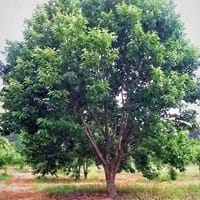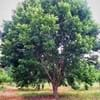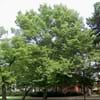Life Span
Perennial
Perennial
Type
Tree
Bulb or Corm or Tuber
Origin
North America, Northeastern United States, Mid-Atlantic United States, Southeastern United States, Canada
South America
Types
Not Available
Pamianthe cardenasii , Pamianthe parviflora , Pamianthe peruviana
Number of Varieties
Not Available
Habitat
Deciduous forests, Forest margins
All sorts of environments
USDA Hardiness Zone
5-8
8-10
Sunset Zone
2a, 2b, 3a, 3b, 4, 5, 6, 7, 8, 9, 14, 15, 16, 17
21,22
Habit
Oval or Rounded
Clump-Forming
Flower Color
Gold, Light Green, Light Yellow, White
White
Flower Color Modifier
Bicolor
Bicolor
Fruit Color
Light Green, Sienna, Chocolate
Green
Leaf Color in Spring
Green
Dark Green
Leaf Color in Summer
Green
Light Green
Leaf Color in Fall
Yellow, Yellow green, Gold
Several shades of Green
Leaf Color in Winter
Not Available
Light Green
Leaf Shape
Toothed
Strap shaped
Plant Season
Spring, Summer, Fall
Spring, Summer, Fall
Sunlight
Full Sun, Partial Sun
Partial Sun, Partial shade
Type of Soil
Clay, Loam
Loam, Sand
The pH of Soil
Acidic, Neutral
Acidic, Neutral, Alkaline
Soil Drainage
Well drained
Average
Bloom Time
Early Summer
Spring, Late Spring, Early Summer, Summer, Late Summer
Tolerances
Not Available
Drought
Where to Plant?
Ground
Ground, Pot
How to Plant?
Seedlings, Stem Planting
Offsets
Plant Maintenance
Medium
Medium
Watering Requirements
Needs very little water
Keep the ground moist but not water-logged
In Summer
Lots of watering
Lots of watering
In Spring
Moderate
Moderate
In Winter
Average Water
Average Water
Soil pH
Acidic, Neutral
Acidic, Neutral, Alkaline
Soil Type
Clay, Loam
Loam, Sand
Soil Drainage Capacity
Well drained
Average
Sun Exposure
Full Sun, Partial Sun
Partial Sun, Partial shade
Pruning
Cut back all stems to the same height, Pinch or prune as they grow to promote branching and bushiness, Remove damaged leaves, Remove dead branches, Remove dead leaves
Pinch or prune as they grow to promote branching and bushiness, Remove damaged leaves, Remove dead branches, Remove dead leaves, Requires little pruning
Fertilizers
14-14-14 Fertilizer, Compost, General purpose liquid or granular fertilizer
All-Purpose Liquid Fertilizer, High phosphorus
Pests and Diseases
Chestnut Blight
Leaf spot, Mosaic viruses
Plant Tolerance
Drought
Drought
Flowers
Insignificant
Showy
Flower Petal Number
Not Available
Single
Foliage Texture
Medium
Coarse
Foliage Sheen
Matte
Glossy
Attracts
Bees, Birds, Deers
Bees, Birds, Bumblebees, Butterflies, Hummingbirds, pollinators
Allergy
conjunctivitis, Vomiting
Unknown
Aesthetic Uses
Showy Purposes
Beautification, Bouquets, Ornamental use, Showy Purposes
Beauty Benefits
Not Available
No Beauty Benefits
Environmental Uses
Air purification, Wildlife
Air purification
Medicinal Uses
Arthritis, Cough, Sore throat, Swelling
No Medicinal Use
Part of Plant Used
Sap, Wood
Not Available
Other Uses
Decorative veneers, flooring, paneling, Used in Furniture, Used in pulpwood and lumber production
Beneficial species for attracting pollinators, Decoration Purposes
Used As Indoor Plant
No
No
Used As Outdoor Plant
Yes
Yes
Garden Design
Edible, Feature Plant, Shade Trees
Bog Garden, Container, Feature Plant, Foundation, Mixed Border, Water Gardens
Botanical Name
CASTANEA dentata
HYMENOCALLIS longipetala
Common Name
American Chestnut
Peruvian Daffodil, Spiderlily
In Hindi
अमेरिकी शाहबलूत
peruvian daffodil
In German
Amerikanische Kastanie
peruvian daffodil
In French
Châtaignier d'Amérique
peruvian daffodil
In Spanish
Castanea dentata
Pamianthe
In Greek
american καστανιάς
peruvian daffodil
In Portuguese
castanea americana
peruvian daffodil
In Polish
Kasztan amerykański
peruvian daffodil
In Latin
English castaneis
peruvian daffodil
Phylum
Magnoliophyta
Magnoliophyta
Class
Magnoliopsida
Liliopsida
Order
Fagales
Asparagales
Family
Fagaceae
Amaryllidaceae
Clade
Angiosperms, Eudicots, Rosids
Angiosperms, Monocots
Tribe
Not Available
Clinantheae
Subfamily
Not Available
Amaryllidoideae
Number of Species
Not Available
Not Available
Season and Care of American Chestnut and Peruvian Daffodil
Season and care of American Chestnut and Peruvian Daffodil is important to know. While considering everything about American Chestnut and Peruvian Daffodil Care, growing season is an essential factor. American Chestnut season is Spring, Summer and Fall and Peruvian Daffodil season is Spring, Summer and Fall. The type of soil for American Chestnut is Clay, Loam and for Peruvian Daffodil is Loam, Sand while the PH of soil for American Chestnut is Acidic, Neutral and for Peruvian Daffodil is Acidic, Neutral, Alkaline.
American Chestnut and Peruvian Daffodil Physical Information
American Chestnut and Peruvian Daffodil physical information is very important for comparison. American Chestnut height is 1,830.00 cm and width 2,130.00 cm whereas Peruvian Daffodil height is 61.00 cm and width 61.00 cm. The color specification of American Chestnut and Peruvian Daffodil are as follows:
American Chestnut flower color: Gold, Light Green, Light Yellow and White
American Chestnut leaf color: Green
Peruvian Daffodil flower color: White
- Peruvian Daffodil leaf color: Dark Green
Care of American Chestnut and Peruvian Daffodil
Care of American Chestnut and Peruvian Daffodil include pruning, fertilizers, watering etc. American Chestnut pruning is done Cut back all stems to the same height, Pinch or prune as they grow to promote branching and bushiness, Remove damaged leaves, Remove dead branches and Remove dead leaves and Peruvian Daffodil pruning is done Pinch or prune as they grow to promote branching and bushiness, Remove damaged leaves, Remove dead branches, Remove dead leaves and Requires little pruning. In summer American Chestnut needs Lots of watering and in winter, it needs Average Water. Whereas, in summer Peruvian Daffodil needs Lots of watering and in winter, it needs Average Water.





